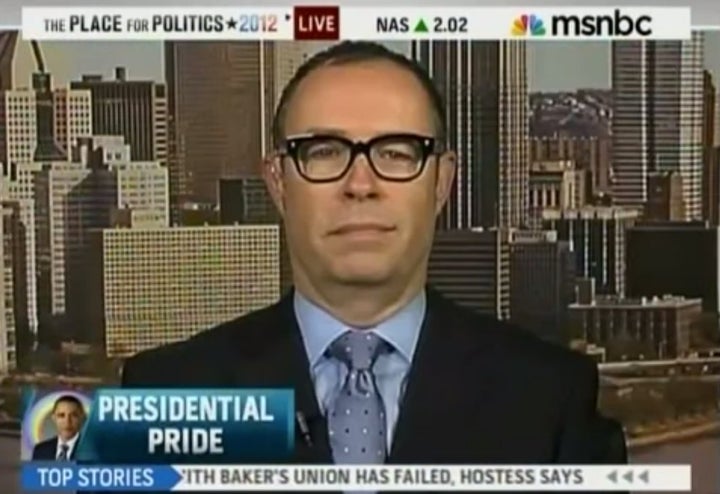
If you've read some of the pieces I've written here on The Huffington Post, you've probably seen me reference the Williams Institute, an LGBT think tank at UCLA, and demographer Dr. Gary Gates, who is one of the institute's leading scholars. Gates is a gay man, by the way, but that hasn't prevented him from experiencing biphobia. And that's because he tells it like it is when it comes to documenting the size of the LGBT population -- without leaving out the B.
Gates has reported time and again the fact that 50 percent of people who identify as either lesbian, gay or bisexual identify as bisexual. (That means, by the way, that the other half identifies as gay or lesbian, which means that, of the three groups, bisexuals make up the majority of the LGB population.) He has also reported, based on averaging out the findings of many different studies, that about 3.5 percent of the overall adult population in the U.S. identifies as lesbian, gay or bisexual. That's about 8 million people.
Detractors seem to feel that the latter percentage is too low and the former too high. In other words, they believe that there are more LGB people than he's reporting, and that more of them are L and G than B.
Here's the thing. What he's reporting on is identity. Study after study that asks people how they identify will corroborate these numbers. This is different from asking people whom they have sex with or even whom they are attracted to, because those questions will result in bigger numbers. Much bigger numbers.
So this brings us to the question of who gets counted as LGB and why. If someone has had sex with both same- and different-sex partners at some point in their adult lives and identifies as heterosexual (which is true for about 11 million people in the U.S.), that means that there are a lot of people doing the same things that bisexual people do, without using the B word to describe themselves. The LGB population would more than double in size if only these heterosexuals would call themselves bisexual instead.
And then there are the 18 million people who identify as heterosexual and have been, at some point, attracted to someone of the same sex. We can assume that they are also attracted to people of different sexes. So, if they all called themselves bisexual, too, that would bring us to an LGB population more than three times bigger than it already is.
But they don't. They don't call themselves bi (or gay or lesbian). They identify as straight. Not that there's anything wrong with that. After all, it's our prerogative to identify as gay, lesbian or bi. Don't they have the same right to identify however they want? (In a minute, I'll get to what that means when they exercise that right.)
As Gates puts it, "[M]easuring sexual orientation identity in some sense depends precisely on the willingness of individuals to describe themselves using those terms." Which is 3.5 percent of the population.
One thing that happened after Gates first reported the 3.5-percent figure is that the Associated Press ran an article with the following headline: "U.S. Has 4 Million Gay Adults, 1.7 Percent of Populace." No, those weren't typos. They left out the other 4 million he reported on: the bisexuals. Gates interpreted it this way: "Bisexuals were simply ignored. There was apparently nothing very noteworthy about them." I'd like to suggest that the AP just didn't know what to do with us, or how to report on us. Not that that's any less disturbing a concept. I just feel that we are simultaneously noteworthy and easy to write about; for example, I write about us all the time!
Another thing that happened after Gates announced the 3.5-percent figure was that gay activist Larry Kramer called him a "horse's ass." For reporting on the consolidation of other researchers' findings on how many people use particular words to describe their sexuality? If you want more people to use certain terms, you should probably not attack those who already do and should instead look into why the others don't.
And this "why others don't" could be referred to as "the closet." Let's say someone has a same-sex experience and calls themselves straight. Are they in the closet? Why? And what is the closet, anyway? Gates defines it this way: "[T]he closet is ... pathological, as it is associated with discordance in people's lives between how they identify ... and how they behave or how they feel. In this case, the closet is not the discordance, per se, but rather the pathology that the discordance creates."
In Bisexual Health, my co-authors and I documented studies showing poorer health (particularly mental health) among those who are discordant compared with those who are not. But setting those studies aside, is there anything theoretically "wrong" with the discord? In other words, what is discord? Why are we saying that someone who does X (in this case, same- and different-sex behavior) but/and identifies as Y (monosexual) is discordant?
After all, as Gates reports, 50 percent of people who identify as gay and lesbian have had different-sex sexual experiences, but they don't identify as bi. Are they discordant? Are they in the closet? Do they suffer from pathology?
(And, yes, that 50-percent means that, in addition to the half of LGBs who identify as B, half of the ones who don't identify as B have, for lack of a better phrase, done bi stuff. This means that 75 percent of those who identify as LGB are bisexual either in identity or "behavior." At the risk of sounding like a bi-supremacist -- tongue firmly in cheek, ha ha -- I believe that's called a supermajority.)
To be continued...